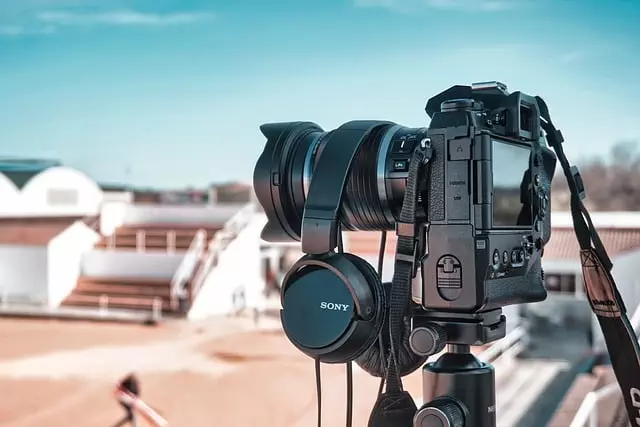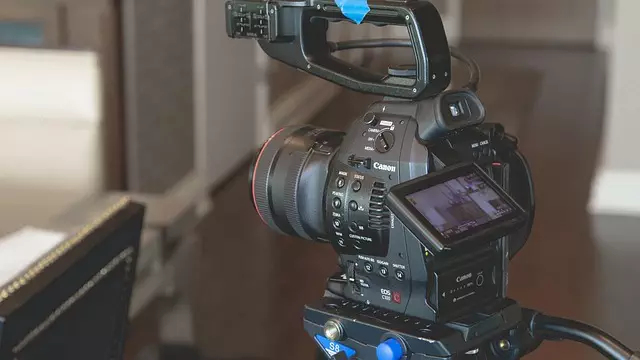Converting DivX files is made simple with the right tools and knowledge. Modern video compression formats like H.264/AVC and H.265/HEVC offer improved efficiency and quality over older DivX, ensuring better playback on a wider range of devices. By converting DivX videos to these newer formats, users can enjoy smoother streaming, faster rendering, and enhanced editing capabilities. Choosing the right conversion tool is crucial; look for software with versatile codec support, efficient batch conversion, intuitive interfaces, and customizable settings to optimize video quality during the transition process.
Revolutionizing Video Compression: Mastering the Transition from DivX to Modern Formats
DivX, once a pioneering video compression format, has been overshadowed by technological advancements. This article guides you through the evolution of video compression, highlighting the rise of H.264/AVC and H.265/HEVC as powerful successors. Learn how converting your old DivX videos to these modern formats offers numerous benefits, including improved compatibility, enhanced playback, and superior editing capabilities. Discover the best tools for this transition and master the art of optimizing settings for optimal results, ensuring your valuable content remains relevant in today’s digital landscape.
# How to Convert DivX: Unlocking Efficient Video Compression with Cutting-Edge Technology

Converting DivX is a powerful method to unlock efficient video compression, leveraging cutting-edge technology for optimal file sizes without sacrificing quality. This process involves specialized software that transcodes videos into a variety of formats, taking advantage of modern algorithms and codecs. These advanced tools analyze the content, identify patterns, and apply sophisticated compression techniques, ensuring a balanced result with minimal loss.
By learning How to Convert DivX, users can take control of their video file sizes, enabling easier sharing, faster streaming, and better compatibility across devices. The process is accessible for both beginners and experts, as user-friendly interfaces and powerful options cater to diverse needs. Embracing this technology opens doors to a new level of flexibility in managing multimedia content.
Understanding DivX and Its Limitations: Explore the history of DivX as a video compression format, its initial popularity, and the challenges it faced due to evolving technology.

The Rise of Modern Compression Algorithms: Introduce advanced video compression techniques that have surpassed DivX, such as H.264/AVC and H.265/HEVC, and explain their benefits in terms of file size reduction and visual quality.

The evolution of video compression algorithms has seen a remarkable shift from the early days of DivX, with advancements like H.264/AVC and H.265/HEVC leading the way. These modern techniques offer significant advantages over their predecessors, primarily in terms of file size reduction and visual quality preservation. H.264/AVC, for instance, introduced powerful motion compensation and advanced entropy encoding, allowing for smaller file sizes without noticeable loss in image clarity.
H.265/HEVC takes this a step further by employing more sophisticated prediction methods and coding techniques. It can compress high-resolution videos effectively, ensuring crisp visuals even at lower bitrates. This is particularly beneficial for streaming services and content creators looking to optimize video delivery while maintaining viewer satisfaction. Converting from DivX to these modern formats provides an opportunity to leverage these advancements, ensuring better overall performance in terms of storage and transmission efficiency.
Benefits of Converting to Modern Formats: Detail the advantages of converting old DivX videos to newer formats, including improved compatibility with modern devices and streaming platforms, better playback performance, and enhanced video editing capabilities.

Converting old DivX videos to newer, more modern formats offers a plethora of advantages for today’s digital content creators and consumers. One of the primary benefits is improved compatibility with the latest devices and streaming platforms. Older video formats like DivX may not be natively supported by newer smartphones, tablets, or high-definition TVs, leading to playback issues or reduced quality. By converting these videos, users can enjoy their media on a wider range of devices without worrying about format incompatibility.
Additionally, modern formats provide better playback performance and enhanced video editing capabilities. Newer codecs used in contemporary formats offer improved compression algorithms that reduce file sizes while maintaining high-quality visuals. This not only facilitates smoother streaming but also makes it easier to edit videos, as smaller file sizes mean faster rendering times and more efficient workflow during the editing process. For content creators looking to reach a broader audience or simply enhance their viewing experience, converting DivX videos to modern formats is a smart step forward.
Choosing the Right Compression Tool: Provide a guide on selecting efficient and user-friendly software or online services for converting DivX videos, considering factors like support for various codecs, batch conversion, and output customization options.

When it comes to converting DivX videos, choosing the right tool is key. Look for software or online services that offer versatile codec support, enabling you to handle a wide range of video formats. This ensures compatibility with your source material and future-proofing your conversion process. Efficient batch conversion capabilities are also essential, especially if you have multiple videos to process simultaneously, saving both time and effort.
User-friendliness should be another top consideration. Opt for tools that offer intuitive interfaces, clear options for output customization (like resolution, bitrate, and container type), and straightforward settings for optimizing video quality while minimizing file size. Remember, the ideal converter strikes a balance between preserving video fidelity and achieving reasonable compression for seamless playback across various devices.
Optimizing Conversion Settings: Educate readers about the art of fine-tuning compression settings to achieve an ideal balance between file size reduction and maintaining video quality, ensuring the converted files are suitable for different use cases.

Optimizing conversion settings is a key aspect of leveraging cutting-edge video compression technology effectively. When converting videos using DivX or similar formats, users have control over various parameters that directly impact the final file size and quality. The art lies in fine-tuning these settings to strike an ideal balance—reducing file sizes significantly while ensuring visual fidelity suitable for diverse viewing platforms.
For instance, adjusting bit rates, resolution, and encoding methods allows content creators and users to tailor their output to specific needs. Lower bit rates compress videos more aggressively, leading to smaller file sizes but potentially sacrificing detail in high-motion sequences or complex scenes. On the other hand, higher bit rates maintain more details but result in larger files, ideal for scenarios demanding uncompromised quality like streaming services or professional productions. Mastering how to convert DivX with these settings ensures content is optimized for its intended audience and platform.
